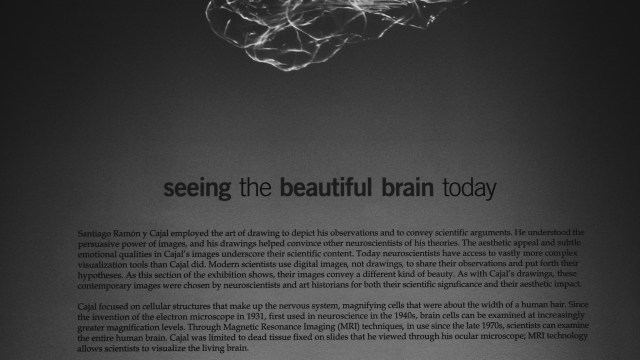Ask Ethan: Could ‘Cosmic Redshift’ Be Caused By Galactic Motion, Rather Than Expanding Space?

Both effects could be responsible for a redshift. But only one makes sense for our Universe.
In physics, like in life, there are often multiple solutions to a problem that will give you the same result. In our actual Universe, however, there’s only one way that reality actually unfolds. The great challenge that presents itself to scientists is to figure out which one of the possibilities that nature allows is the one that describes the reality we inhabit. How do we do this with the expanding Universe? That’s what Vijay Kumar wants to know, asking:
When we observe a distant galaxy, the light coming from the galaxy is redshifted either due to expansion of space or actually the galaxy is moving away from us. How do we differentiate between the cosmological redshift and Doppler redshift? I have searched the internet for answers but could not get any reasonable answer.
The stakes are among the highest there are, and if we get it right, we can understand the nature of the Universe itself. But we must ensure we aren’t fooling ourselves.
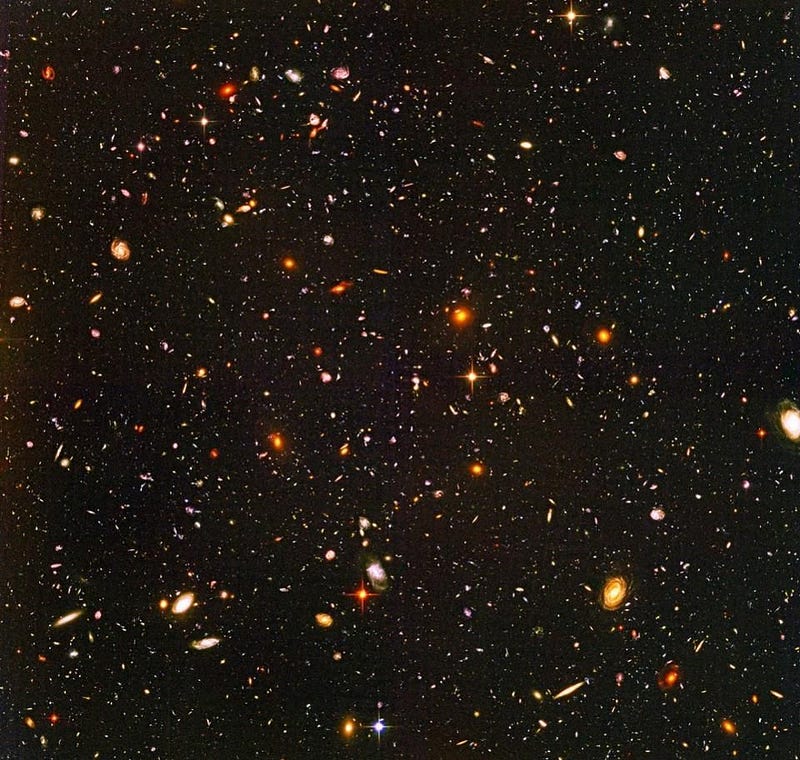
When you look out at a distant object in the sky, you can learn a lot about it by observing its light. Stars will emit light based on their temperature and the rate at which they fuse elements in their core, radiating based on the physical properties of their photospheres. It takes millions, billions, or even trillions of stars to make up the light we see when we examine a distant galaxy, and from our perspective here on Earth, we receive that light all at once.
But there’s an enormous amount of information encoded in that light, and astronomers have figured out how to extract it. By breaking up the light that arrives into its individual wavelengths — through the optical technique of spectroscopy — we can find specific emission and absorption features amidst the background continuum of light. Wherever an atom or molecule exists with the right energy levels, it absorbs or emits light of explicit, characteristic frequencies.
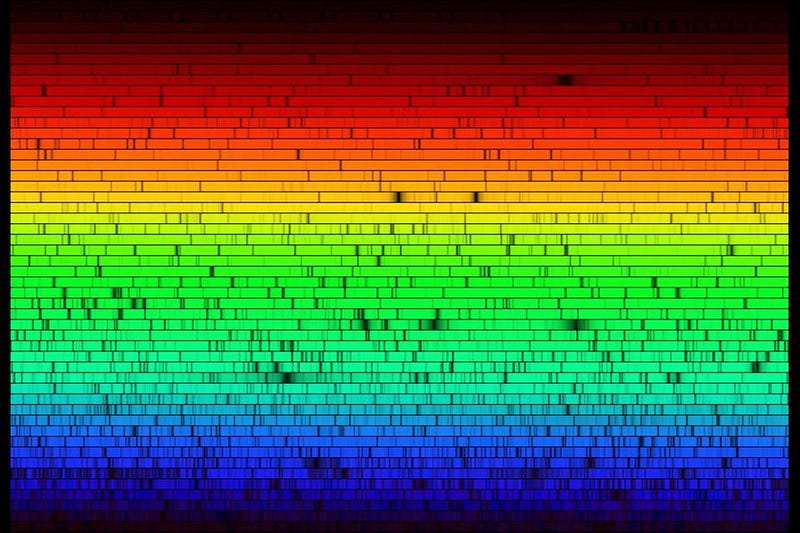
Whether an atom is neutral, ionized one, two, or three times, or is bound together in a molecule will determine what specific wavelengths it emits or absorbs. Whenever we find multiple lines emitted or absorbed by the same atom or molecule, we uniquely determine its presence in the system we’re looking at. The ratios of the different wavelengths emitted and absorbed by the same type of atom, ion, or molecule never changes throughout the entire Universe.
But even though atoms, ions, molecules, and the quantum rules governing their transitions remains constant everywhere in space and at all times, what we observe isn’t constant. That’s because the different objects we observe can have their light systematically shifted, keeping the wavelength ratios the same but shifting the total wavelength by an overall multiplicative factor.
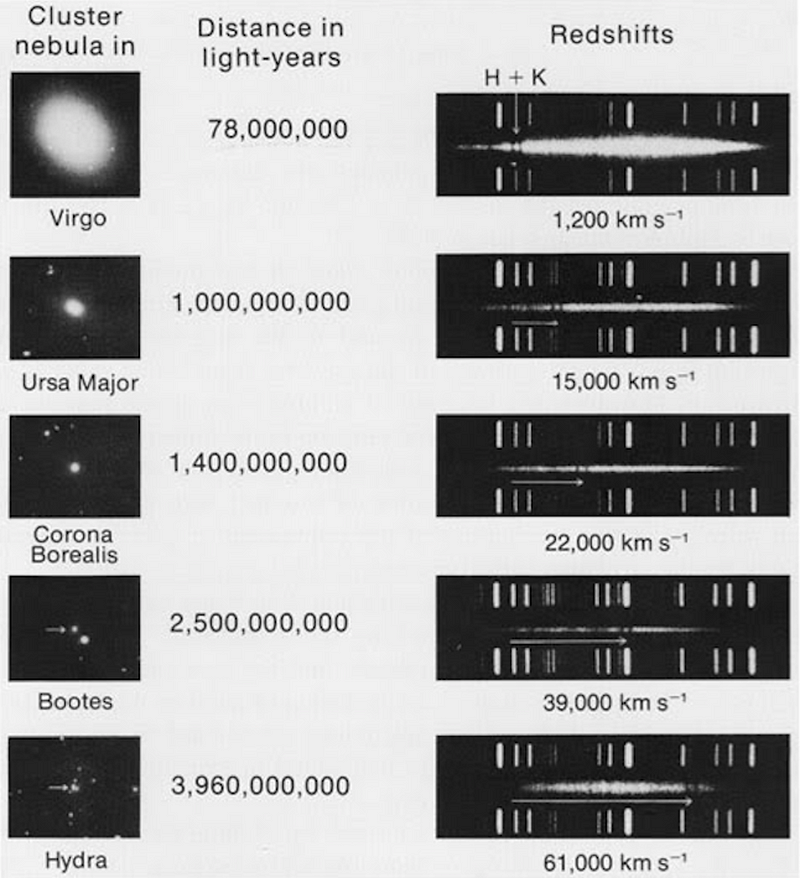
The question we want a scientific answer to, of course, is “why is this occurring?” Why does the light we observe from distant objects appear to shift all at once, by the same ratio for all lines in every individual object we observe?
The first possibility is one we encounter all the time: a Doppler shift. When a wave-emitting object moves towards you, there’s less space between the wave crests you receive, and therefore the frequencies you observe are shifted towards higher values than the emitted frequencies from the source. Similarly, when an emitter moves away from you, there’s more space between the crests, and therefore your observed frequencies are shifted towards longer values. You’re familiar with this from the sounds emitted from moving vehicles — police sirens, ambulances, ice cream trucks — but it happens for light sources as well.
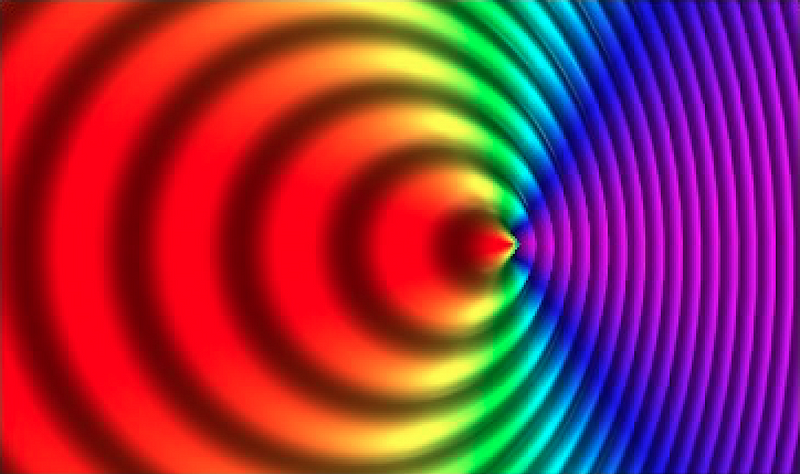
There’s a second plausible possibility, however: this could be a cosmological shift. In General Relativity (our theory of gravity), it is physically impossible to have a static Universe that’s filled with matter and radiation throughout it. If we have a Universe that is, on the largest scales, filled with equal amounts of energy everywhere, that Universe is compelled to either expand or contract.
If the Universe expands, the light emitted from a distant source will have its wavelength stretched as the very fabric of space itself expands, leading to a redshift. Similarly, if the Universe contracts, the light emitted will have its wavelength compressed, leading to a blueshift.
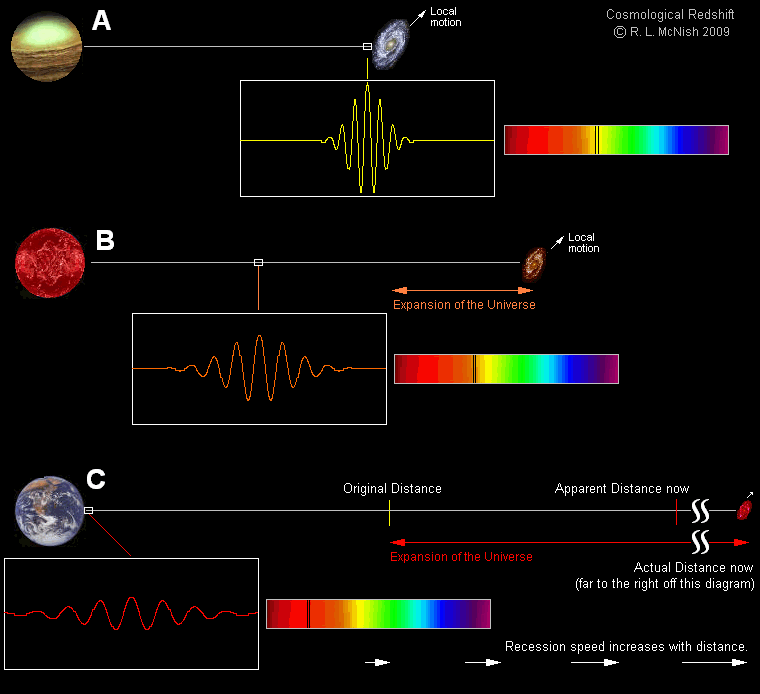
When we look out at the galaxies we actually have in the Universe, the overwhelming majority of them aren’t just redshifted, they’re redshifted by an amount proportional to their distance from us. The farther away a galaxy is, the greater its redshift, and the law is so good that these two properties increase in direct proportion to one another.
First put forth in the late 1920s by scientists like Georges Lemaitre, Howard Robertson, and Edwin Hubble, this was taken even in those early days as overwhelming evidence in favor of the expanding Universe. In other words, nearly a century ago, people were already accepting the explanation that it was expanding space and not a Doppler shift that was responsible for the observed redshift-distance relation.
Over time, of course, the data has gotten even better in support of this law.
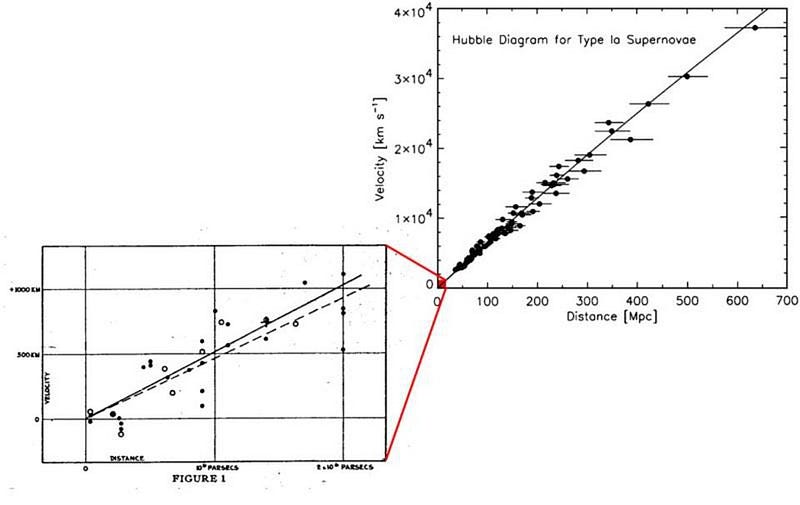
As it turns out, there are actually a total of four possible explanations for the redshift-distance relation we observe. They are as follows:
- The light from these distant galaxies getting “tired” and losing energy as they travel through space.
- Galaxies evolved from an initial explosion, which pushes some galaxies farther away from us by the present.
- The galaxies move rapidly, where the faster-moving, higher-redshift galaxies wind up farther away over time.
- Or the fabric of space itself expanding.
Fortunately, there are observational ways to discern each of these alternatives from one another. The results of our observational tests yield a clear winner.
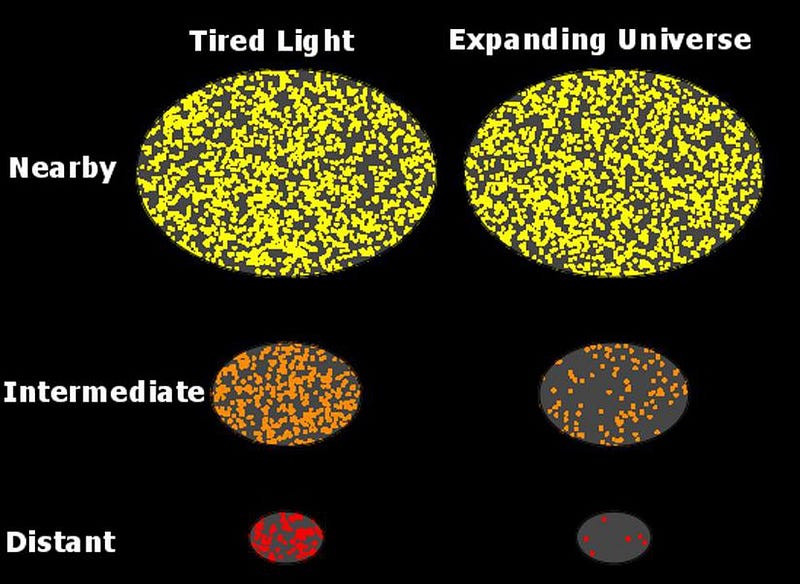
The first is to look at the surface brightness of distant galaxies. If the Universe weren’t expanding, a more distant galaxy would appear fainter, but a uniform density of galaxies would ensure we were encountering more of them the farther away we look. In a Universe where the light got tired, we would get a constant number density of photons from progressively more distant galaxies. The only difference is that the light would appear redder the farther away the galaxies are.
This is known as the Tolman Surface Brightness test, and the results show us that the surface brightness of distant galaxies decreases as a function of redshift, rather than remaining constant. The tired-light hypothesis is no good.

The explosion hypothesis is interesting, because if we see galaxies moving away from us in all directions, we might be tempted to conclude there was an explosion long ago, with the galaxies we see behaving like outward-moving shrapnel. This should be easy to detect if so, however, since there should be smaller numbers of galaxies per unit volume at the greatest distances.
On the other hand, if the Universe were expanding, we should actually expect greater numbers of galaxies per unit volume at the greatest distances, and those galaxies should be younger, less evolved, and smaller in mass and size. This is a question that can be settled observationally, and quite definitively: deep galaxy counts show an expanding Universe, not one where galaxies were flung to great distances from an explosion.
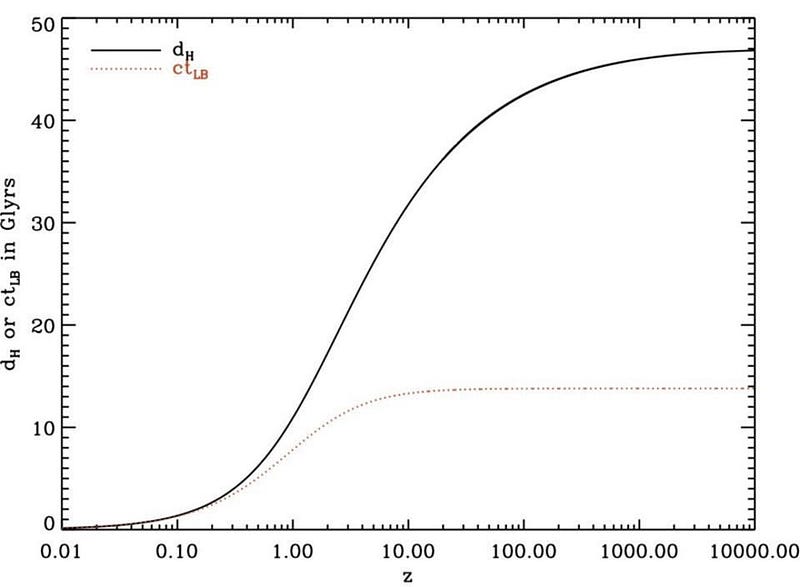
Finally, there’s a direct redshift-distance test we can perform to determine whether the redshift is due to a Doppler motion or to an expanding Universe. There are different ways to measure distance to an object, but the two most common are as follows:
- angular diameter distance, where you know an object’s physical size and infer its distance based on how large it appears,
- or luminosity distance, where you know how bright an object intrinsically is and infer its distance based on how bright it appears.
When you look out at the distant Universe, the light has to travel through the Universe from the emitting object to your eyes. When you do the calculations to reconstruct the proper distance to the object based on your observations, there’s no doubt: the data agrees with the expanding Universe’s predictions, not with the Doppler explanation.
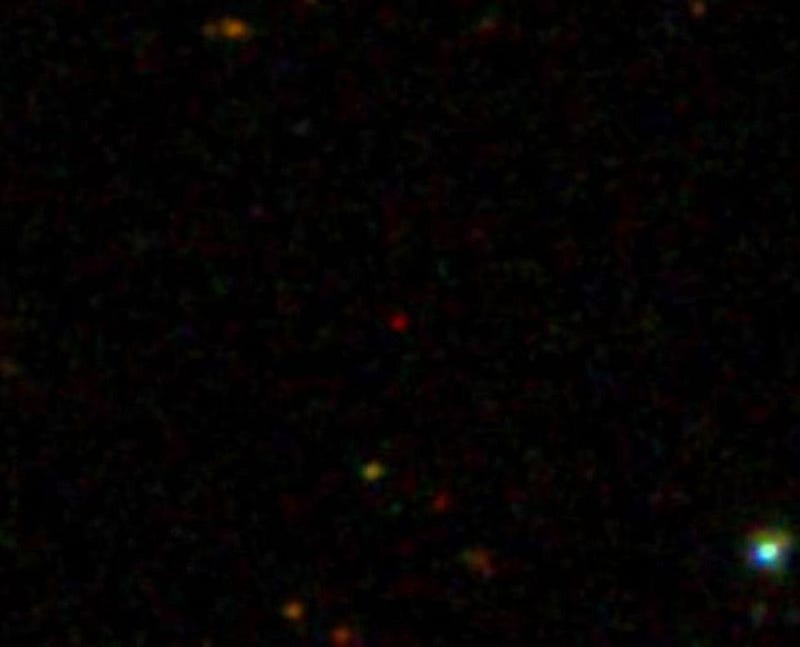
If we lived in a Universe where the distant galaxies were so redshifted because they were moving away from us so quickly, we’d never infer that an object was more than 13.8 billion light-years away, since the Universe is only 13.8 billion years old (since the Big Bang). But we routinely find galaxies that are 20 or even 30 billion light-years distant, with the most distant light of all, from the Cosmic Microwave Background, coming to us from 46 billion light-years away.
It’s important to consider all the possibilities that are out there, as we must ensure that we’re not fooling ourselves by drawing the type of conclusion we want to draw. Instead, we have to devise observational tests that can discern between alternative explanations for a phenomenon. In the case of the redshift of distant galaxies, all the alternative explanations have fallen away. The expanding Universe, however unintuitive it may be, is the only one that fits the full suite of data.
Send in your Ask Ethan questions to startswithabang at gmail dot com!
Ethan Siegel is the author of Beyond the Galaxy and Treknology. You can pre-order his third book, currently in development: the Encyclopaedia Cosmologica.




